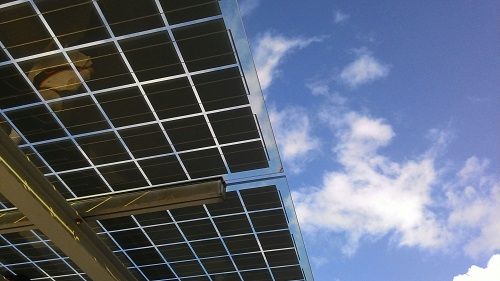Institutional investors in particular are increasingly investing their funds in infrastructure again. 2023 was a rather difficult year for this sector. However, the dip is now being overcome and infrastructure is very attractive in the long term. "Renewable energies are at the top of the list," says Markus W. Voigt, CEO of the aream Group. However, investors should know in advance which projects their money is going into. "That's why assets from providers who are also active in project development are a good choice."
Infrastructure has been one of the megatrends on the capital markets for years. Demand is immense, with new roads, ports, rail and telecommunications networks being built around the world. Added to this are facilities for the generation and distribution of clean energy. Private capital is urgently needed for this. The pandemic caused investment to slump in 2020, but it recovered in the following years and reached new heights. There was a further decline in 2023, particularly due to the expectation of permanently high interest rates and the moderate economic outlook. However, things are now picking up again, partly because the global economic climate has improved.
While the transportation sector initially dominated, it is now the energy sector that is attracting the most funding and projects. This development is being driven by decarbonization, which is causing the demand for renewable energies to rise permanently. Not only solar and wind power generation plants are needed, but also grids. For investors, in turn, infrastructure is an investment that promises long-term and stable returns and is therefore also very well suited as a diversification vehicle.
However, the same applies to the infrastructure megatrend: not all investments are good and not all of the good ones are equally attractive. "When it comes to investments, it's all about what you get," says Voigt. "That's why you should have some clarity right from the start about where your money is going." The worst option is so-called blind pools - funds where it is not yet clear exactly which properties will be invested in at the start of placement. Due to their greater flexibility, blind pools do offer the opportunity to react more quickly to market developments. "Ultimately, however, you pay for this with a higher degree of uncertainty, also with regard to the timing of the capital call," says Voigt.
Instead, investors should carefully examine the offers from investment companies and leave nothing to chance. "It is ideal if the provider of the assets is also active in project development," explains Voigt. Because then they have access to their own projects. "And because such a provider covers a larger part of the value chain, it also has more experience and knowledge of how to evaluate projects that are then handed over as assets."
PRESSEKONTAKT:
Leandra Kiebach
T: +49 (0)211 30 20 60 4-2
E: lk@aream.de
